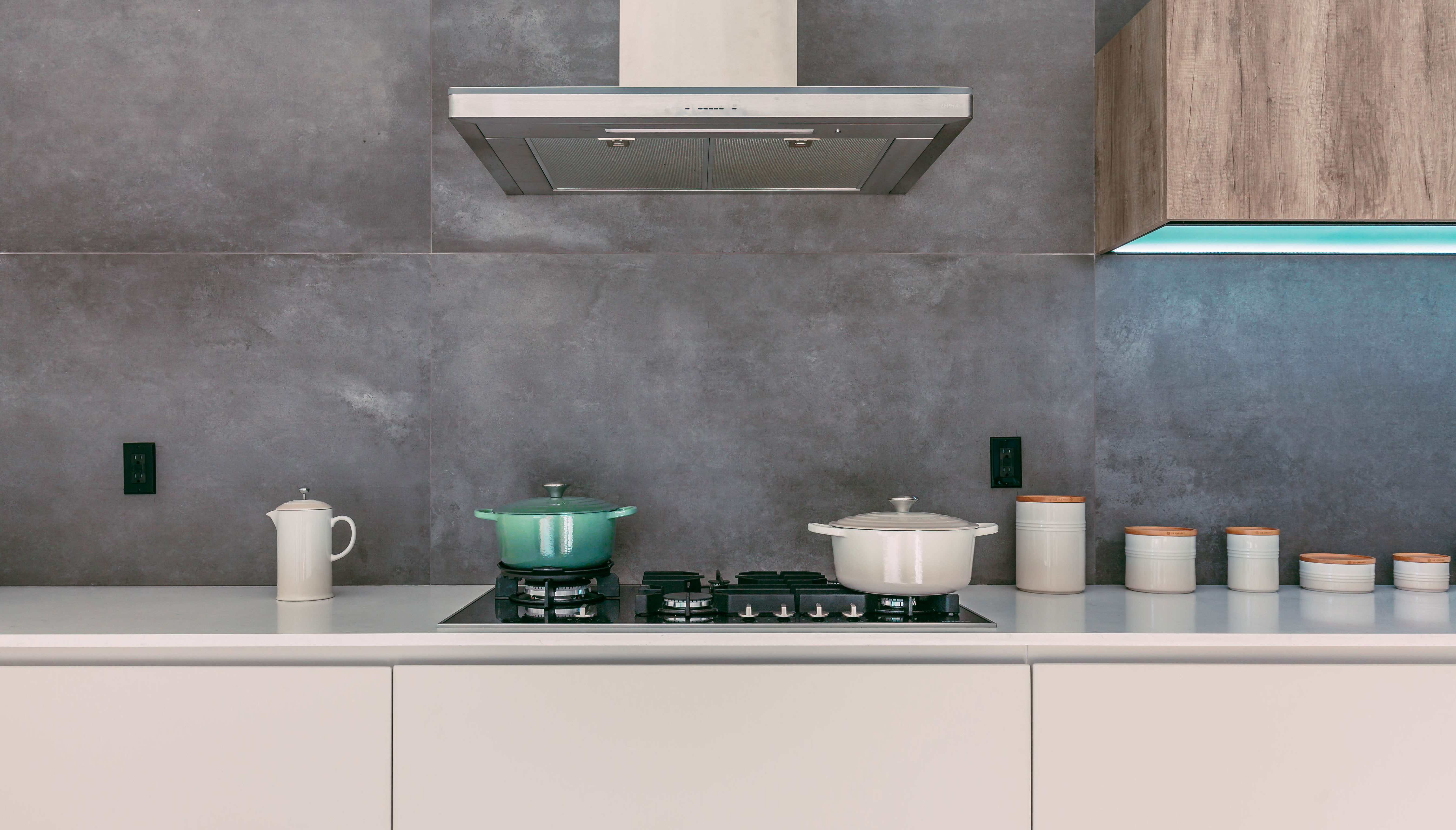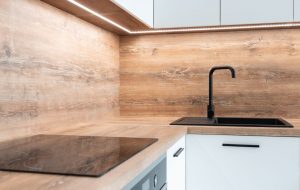Can You Use Plastic Cladding in Kitchens?

Did you know that wall cladding can be installed in kitchens? Kitchen wall cladding is easy to clean and 100% waterproof which makes it the ideal go-to kitchen splashback. It is a common problem to find horrible moulds growing between the tiles in your shower or kitchen that seem impossible to control. Grout whiteners only work for a short while whereas many spray-on cleaners do not make much of an impression. It becomes even worse if the grout in your tiles is past its best since water gets logged behind the tiles and could trigger numerous devastating issues that are not visible to you.
If you are looking for an effective way of enhancing your kitchen’s appearance, then you can consider using wall cladding for your kitchen’s next renovation. Principality Plastics kitchen wall cladding is easy to install, affordable and can be conveniently installed over existing kitchen tiles. There is a wide array of looks and styles to select from depending on your taste and preference.
Benefits of Using Wall Cladding in your Kitchen
Installing wall cladding in your kitchen has plenty of advantages over the use of traditional materials. Here are some of the benefits associated with using wall cladding.
Hygienic and easy to clean
Wood and tiles have long been used as the traditional materials for kitchens. However, there are several pitfalls associated with them that make them the least suitable options. Among them include being prone to dampness which may result in them becoming a breeding ground for dirt and bacteria.
In contrast, wall cladding is considerably more hygienic because bacteria or dirt can be easily cleaned off using a cloth and some cleaning spray. Furthermore, wall cladding greatly reduces the risk of dampness because water droplets on the wall cladding panels can be wiped away and the material used to make wall cladding is impermeable and does not absorb moisture.
Easy and convenient installation
The installation process for wall cladding is easy and convenient. The reason for this is wall cladding do not require varnishing or any other finishing work. In comparison to glass or ceramic tiles, kitchen wall cladding is simple to install and the preparation cost and time are highly reduced. This results in substantial benefits in general.
Wall cladding sheets can be carefully cut to the exact size and made to slot together just as laminate floorings. Wall cladding being water-resistant means that there is no need for you to grout. The interesting bit about wall cladding is that it can be easily installed over existing tiles as long as they are firm and secure.
No grouting
No grouting not only reduces the time taken during the installation process but also reduces the time spent in cleaning and maintenance because there will be no need for scrubbing or bleaching. More so, it creates a much more hygienic kitchen place as there will be no build-up of moulds. Using wall cladding is the ideal solution for domestic kitchens as well as highly sensitive environments such as commercial kitchens.
The smooth surface of wall cladding makes it convenient to keep your kitchen clean and bacteria-free. Because there are no cracks or crevices that germs can hide in, the wall panels can be sanitised with just a non-abrasive antibacterial cleaner and a soft cloth.
A wide array of colours to choose from
PVC wall cladding comes in a plethora of colours and designs to choose from. Therefore, there is no need for you to worry kitchen appearing “too clinical” because you can select the colours to your taste. Should you change your mind after installation, you ought to know that the materials used to make wall cladding is 100% recyclable and easy to remove. This means you can keep adjusting your kitchen’s appearance as many times as you wish.
We have a wide variety of high gloss kitchen and malt splashbacks in a range of various vibrant colours depending on what colour you feel goes best with your kitchen’s design.
Installation of Kitchen Wall Panels
First, the wall substrate has to be dried and be free from any dust, dirt and grease. Also, the walls need to be even and flat. If there are any low spots, they should be filled. All foreign matter that would affect a good adhesive bond should be removed. Nova Flooring in Cardiff specialises in the installation of hygienic wall cladding for both domestic and commercial environments.
Measure the length of the kitchen walls using a tape measure and transfer it to the wall cladding. Mark with a pencil and cut to size. Remove the protective film on the front of the panel. Run a reasonable amount of sealant/adhesive on the wall panel’s back and push firmly the wall panel until you get a neat finish. If there is any excess panel, trim it off around the edges.
